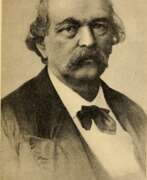Preachers 19th century


Edward Everett Hale was an American clergyman, preacher and writer, abolitionist and pacifist.
Hale demonstrated outstanding literary ability from an early age. He went to Harvard College and became a minister and preacher. Grandnephew of Revolutionary hero Nathan Hale and nephew of orator Edward Everett, Hale worked for his father's newspaper, the Boston Daily Advertiser. And for 70 years he never stopped writing newspaper articles, historical essays, short stories, pamphlets, and sermons for the North American Review, The Atlantic Monthly, and the Christian Examiner. From 1870 to 1875 he published and edited the Unitarian magazine Old and New.
Hale wrote several novels, of which the most popular were East and West (1892) and In His Name (1873). Hale's most famous novel, A Man Without a Country, first published in The Atlantic Monthly in 1863, was written to evoke patriotism during the Civil War. It is a political fable about a man who renounces his American citizenship and greatly regrets it.
Many of Hale's 150 books and pamphlets were tracts in support of the ideas of Negro education, worker's housing, and world peace. The moralistic novel Ten Times One is Ten (1871) was the impetus for the organization of several youth groups.
In 1847, Hale was elected a member of the American Antiquarian Society and remained a member for the rest of his life. A 10-volume collection of Edward Hale's writings was published between 1898 and 1900. In 1903 he was appointed chaplain of the United States Senate and joined the Literary Society of Washington. The following year he was elected a member of the Academy of Arts and Sciences.


Sojourner Truth, born Isabella Baumfree, was an American abolitionist and feminist born into slavery.
Isabella Baumfree was born a slave in Dutch-speaking Ulster County, New York. She was bought and sold four times, subjected to hard physical labor and cruel punishments. As a teenager, she was united with another slave, by whom she had five children. In 1827 - a year before New York's slave emancipation law went into effect - Isabella and her daughter escaped to the nearby Van Wagener abolitionist family. This family bought her freedom for twenty dollars and helped her get her son back.
Isabella moved to New York City in 1828, where she worked for a local minister. By the early 1830s, she was involved in the religious actions sweeping the state and became a charismatic orator. In 1843, she claimed that the Spirit had called her to preach the truth and began calling herself Sojourner Truth. She advocated abolition, temperance, and civil and women's rights.
Being illiterate herself, Sojourner Truth dictated her story to Olive Gilbert, with whom she worked in the abolitionist Northampton Association. As a result, Sojourner Truth's Narrative of Sojourner Truth, a Northern slave freed from bodily slavery by the State of New York in 1828, was published in 1850. 1851 in Akron, Ohio, Truth gave her famous "Am I Not a Woman?" speech. She was a passionate fighter for all aspects of social justice and continued to travel the United States at the risk of her life giving speeches on women's rights, prison reform, and desegregation.









